Ephesians 2:14-15: What has been abolished?
How can you say that the Law of Moses is still to be followed by Christians today, when it is quite clear that the Law of commandments has been abolished?
Pastor: Ephesians 2:14-15: The Law was abolished in the flesh of Christ.
“For He Himself is our peace, who made both groups into one and broke down the barrier of the dividing wall, by abolishing in His flesh the enmity, which is the Law of commandments contained in ordinances, so that in Himself He might make the two into one new man, thus establishing peace.”
Ephesians 2:14-15 are challenging verses for many within the Messianic movement, with few being able to even respond to the pastor’s remark “The Law was abolished in the flesh of Christ.” If in Ephesians 2:14-15 the Apostle Paul is saying that Yeshua the Messiah abolished the Torah of Moses, then this would be in flat contradiction of the Savior’s own words regarding fulfillment of the Torah (Matthew 5:17-19)—yet no one can deny the significance of how in Him a “one new humanity” (NRSV/CJB/TNIV) composed of Jewish and non-Jewish Believers must emerge, a clear testament of His grand salvation for all people. We need to look at Ephesians 2:14- 15 a bit more closely, and keep in mind what kind of law is being specifically addressed here. Is God’s Torah actually a cause of enmity or hostility for people, or might something else be in mind?
Immediately previous in Ephesians 2:11-13, Paul asserts how those of his largely non- Jewish audience in Asia Minora had once been separate from the One True God, and consequently also separate from Israel. This, however, is a status which has been reversed with the arrival of the Messiah Yeshua into their lives:
“Therefore remember that formerly you, the Gentiles in the flesh, who are called ‘Uncircumcision’ by the so-called ‘Circumcision,’ which is performed in the flesh by human hands—remember that you were at that time separate from Messiah, excluded from the commonwealth of Israel, and strangers to the covenants of promise, having no hope and without God in the world. But now in Messiah Yeshua you who formerly were far off have been brought near by the blood of Messiah” (Ephesians 2:11-13).
Speaking of the non-Jewish Believers, Paul says that prior to their faith in Yeshua, they had once been “excluded” (NASU) or “alienated” (RSV) from the Commonwealth of Israel (tēs politeias tou Israēl). They had been without any hope of salvation. Yet, being found in Yeshua they have been “brought near” (cf. Deuteronomy 4:7; Isaiah 56:3; Psalm 148:14) and into Israel as a direct result of salvation. They possess a citizenship which their trespasses and sins once barred them from having, and as Paul further explains in Ephesians 3:6, “the Gentiles are fellow heirs and fellow members of the body, and fellow partakers of the promise in Messiah Yeshua through the gospel.” All people are to be reckoned as a part of the same community of Israel in Israel’s Messiah. This is significant to the point that the reconciliation of once hostile Jewish and non-Jewish people to one another, composing the Body of Messiah, is to serve as a sign of the further redemption to come to the cosmos (Ephesians 3:10).
Paul’s attestation in Ephesians 2:14 is not too difficult to comprehend: “For He Himself is our peace, who made both groups into one and broke down the barrier of the dividing wall.” There was something that specifically represented the division between the Jewish people and the nations in the First Century, which had to be broken down, in a manner of speaking. Certainly, there is no shortage of quotations to be seen in ancient Jewish literature, as well as various Greek and Roman works, detailing the great amount of ungodly prejudice and negativity present—which the Apostles and early Believers all had to work against in sharing the good news of Yeshua to all who would hear. What needed to be torn down is labeled by Paul to be “the barrier of the dividing wall,” to mesotoichon. Only when such a wall is torn down, in the hearts of people, can the true shalom or all-encompassing peace of the Lord be manifest.b What this dividing wall is specifically supposed to be is a cause of much dispute among interpreters, especially given the following word:
“[B]y abolishing in His flesh the enmity, which is the Law of commandments contained in ordinances…” (Ephesians 2:15a).
By His sacrifice on the tree, Yeshua the Messiah has specifically abolished tēn echthran or “the hostility” (NRSV). Christopher J.H. Wright reminds us what the actual issue in view is: “to remove the barrier of enmity and alienation between Jew and Gentile, and by implication all forms of enmity and alienation…The cross is the place of reconciliation, to God and one another.”c In rendering this negative condition inoperative, many readers automatically conclude that the regulations of the Law of Moses are what stood in the way of the Jewish people and the nations, causing great problems, and so the Torah needed to be abolished. Before we jump to the immediate conclusion that all Christian interpreters everywhere have viewed Ephesians 2:15a speaking of all of the Torah, there are in fact several distinct options put forward:
- This “law” is the totality of the Torah.
- This “law” composes the ceremonial commandments of the Torah, particularly in relation to the regulations of clean and unclean. Or, it composes the death penalty for high crimes in the Torah (cf. Colossians 2:14). This “law” does not compose the moral or ethical commandments of the Torah.
- This “law” is a reference to what caused the dividing wall seen in the Jerusalem Temple (Josephus Antiquities of the Jews 417; Wars of the Jews 194), derived from various inappropriate interpretations of Torah commandments. This would constitute “law,” but not law of Mosaic origin (cf. Mark 7:6-7).
While the first view is one which looks disfavorably upon the Torah, the second and third views tend to look favorably upon the Torah to an extent.
The second view is generally adhered to among Christian Old Testament theologians, who still have a highly favorable view of the Torah’s moral and ethical commandments, and the Ten Commandments especially, which are to always be followed by God’s people in any generation. In his book The Message of the Cross, Derek Tidball specifies that the so-called “moral law” of God could not be abolished or intended here, per the words of the Messiah Himself:
“The ‘barrier’ or ‘dividing wall’ might allude to the wall that separated the court of the Gentiles from the inner courts of the temple, which were to be entered only by Jews. It prevented Gentiles from going further and warned them that they took their lives into their own hands if they did….Christ did not abolish the moral law by rendering it no longer relevant. If Paul were claiming that, he would be contradicting Christ’s own teaching. But on the cross Christ did nullify the condemnation this law brings us under when we break it, by removing the penalty of our disobedience from us and bearing it himself. He nullified the ceremonial law, abolishing its regulations through fulfilling it in himself, thus making them an anachronism. Because he did so, these laws can no longer exercise their divisive powers.”d
There are many interpreters who continue to hold to the view that only the “ceremonial law” was rendered inoperative via Yeshua’s sacrifice. Kaiser is one who holds to this view, and he does validly note, “Had the law in its entirety been intended in this ‘abolishment,’ Ephesians 6:2 would be somewhat of an embarrassment: ‘Honor your father and mother.’”e It would be absolutely ridiculous for Paul to consider that the Torah as a whole has been abolished, especially if he later must appeal to its instruction in the same letter! Christian interpreters who have a high view of the Torah do rightly point out that Ephesians 2:15 has to be balanced in view of Matthew 5:17 and Romans 3:31. They are also keen to point out that removing the Tanach or Old Testament from a modern Christian’s regimen of discipleship has had disastrous moral consequences, being right to assert that things like the Ten Commandments were to keep Ancient Israel rightfully separated from the pagan nations around them.
The third view concurs with the imagery of the Temple of God, “a holy temple in the Lord” (Ephesians 2:21), that Paul considers the Body of Messiah to be, with the Jerusalem Temple made as an obvious point of comparison. And, there was definitely a barricade that was present in the Jerusalem Temple which separated the Court of the Gentiles from the inner court, the latter only being accessible to Jews and proselytes. The First Century historian Josephus testified to this:
“Thus was the first enclosure. In the midst of which, and not far from it, was the second, to be gone up to by a few steps; this was encompassed by a stone wall for a partition, with an inscription, which forbade any foreigner to go in, under pain of death” (Antiquities of the Jews 15.417).f
“[T]here was a partition made of stone all round, whose height was three cubits: its construction was very elegant; upon it stood pillars at equal distances from one another, declaring the law of purity, some in Greek, and some in Roman letters, that ‘no foreigner should go within that sanctuary’” (Wars of the Jews 5.194).g
Here, we see that this dividing wall which was erected between the Court of the Gentiles and the inner court included signs that any unauthorized person passing through would be executed, presumably on sight. S. Westerholm explains, “at regular intervals were placed slabs with inscriptions in Greek and Latin forbidding Gentiles, on pain of death, to go further…It has often been suggested that Eph. 2:14 (the ‘dividing wall of hostility’) contains an allusion to this barrier” (ISBE).h This was a barrier that separated Jews from both non-Jews and women. Francis Foulkes attests, “Christ had now broken down the barrier between Jews and Gentiles, of which that dividing wall in the temple was a symbol.”i Bruce further observes,
“This was indeed a material barrier keeping Jews and Gentiles apart…Whatever the readers may or may not have recognized…it should be remembered that the temple barrier in Jerusalem played an important part in the chain of events which led to Paul’s [imprisonment]…That literal ‘middle wall of partition,’ the outward and visible sign of the ancient cleavage between Jew and Gentile, could have come very readily to mind in this situation.”j
If the dividing wall in the Jerusalem Temple is what Paul has in mind as being torn down in the Messiah, it certainly begs the question whether the erection of such a wall was God’s original intention. Some say that it was a natural application of the Torah,k keeping Israel separated from the nations. Yet, does the erection of to mesotoichon in Ephesians 2:14-15 fit well with the missional imperatives upon God’s people seen in the Tanach (Old Testament)? When the Lord called Israel as a nation of priests unto Him (Exodus 19:6)—intermediaries between Him and the world—would erecting barriers to keep outsiders out be a part of that call? It was, after all, to be Israel’s obedience to God’s Torah that would make them wise in the eyes of the other nations (Deuteronomy 4:6), and by seeing Israel blessed then other nations would flock to inquireabout Him!
At the dedication of the First Temple, the prayer of King Solomon is that the nations would hear of the fame of Israel’s God, and stream toward the Temple and come to know Him:
“Also concerning the foreigner who is not of Your people Israel, when he comes from a far country for Your name’s sake (for they will hear of Your great name and Your mighty hand, and of Your outstretched arm); when he comes and prays toward this house, hear in heaven Your dwelling place, and do according to all for which the foreigner calls to You, in order that all the peoples of the earth may know Your name, to fear You, as do Your people Israel, and that they may know that this house which I have built is called by Your name” (1 Kings 8:41-43).
The eschatological vision of the Temple is that all nations would stream toward it, joining themselves to the Lord and serving Him:
“Also the foreigners who join themselves to the LORD, to minister to Him, and to love the name of the LORD, to be His servants, every one who keeps from profaning the sabbath and holds fast My covenant; even those I will bring to My holy mountain and make them joyful in My house of prayer. Their burnt offerings and their sacrifices will be acceptable on My altar; for My house will be called a house of prayer for all the peoples” (Isaiah 56:6-7).l
Did the Torah truly bring about a hostility between Paul’s Jewish people and the nations? Did the construction of the Temple purposefully create a division between Israel and the nations? You will note that there is no Torah commandment regarding the construction of a dividing wall in God’s sanctuary, nor would such an ideology be supported anywhere in the Tanach. The purpose of constructing the Temple was l’ma’an yeid’un kol-amei ha’eretz et-shemkha l’yir’ah otkha, “Thus all the peoples of the earth will know Your name and revere You” (1 Kings 8:43, NJPS). The Temple was built to be a place for God’s glory to be manifest, and for the fame of the Creator to reach beyond the people of Israel! As Isaiah says, it was to be beit-tefilah yiqarei l’kol-ha’amim, “[a] house of prayer called for all the peoples” (Isaiah 56:6, my translation).
The debate over the dividing wall to be torn down in Yeshua, ultimately regards how one chooses to view the clause:
ton nomon tōn entolōn en dogmasin
This clause is invariably rendered as something along the lines of “the law with its commandments and regulations” (NIV), “the law of commandments expressed in ordinances” (ESV), or “the law with its rules and regulations” (REB).m Ton nomon tōn entolōn en dogmasin literally “the law of commandments in decrees” (Witherington),n with the NASU rendering of “the Law of commandments contained in ordinances,” being probably the most literal that you will be able to find among mainline versions.
The singular entolē means “a mandate or ordinance, command,” and can be used “of commandments of OT law” (BDAG),o even though this is not a strict necessity. In a secular sense entolē was used “as the command of a king or official” or “as the instruction of a teacher” (TDNT).p
What dogma pertains to is slightly more complex, as it can be both “a formal statement concerning rules or regulations that are to be observed” and “something that is taught as an established tenet or statement of belief, doctrine, dogma” (BDAG).q Dogma is not used at all in the Septuagint translation of the Pentateuchal books to describe any category of Torah commandments. It principally appears in the Book of Daniel to describe the decrees of the Babylonians and the Persians (Daniel 2:13; 3:10, 12; 4:6; 6:9ff, 13f, 16, 27; cf. Acts 17:7), as it can certainly be referring to “an imperial declaration” (BDAG).r Wayne E. Ward further indicates, in Baker’s Dictionary of Theology:
“[T]he word designates a tenet of doctrine authoritatively pronounced. In the LXX dogma appears in Esth. 3:9; Dan. 2:13 and 6:8 for a degree issued by the king. In Luke 2:1 it is the decree of Caesar Augustus, in Acts 16:4 the decrees laid down by the apostles, in Col. 2:14 and Eph. 2:15 the judgments of the law against sinners, which Jesus triumphed over in the cross.”s
In the Apocrypha an apostate Jew is said to leave all of tōn patriōn dogmatōn or “the ancestral traditions” (3 Maccabees 1:3), and a brother who is martyred testifies to have been raised on dogmasin or various “teachings” (4 Maccabees 10:2), neither of which has to be the Torah/Pentateuch proper. Given these examples, you should see some interpretational possibilities open to us as Messianic Believers, especially per Yeshua’s word that He came to not abolish the Law of Moses (Matthew 5:17-19; Luke 16:17).
I would propose that a more correct translation of Ephesians 2:15b, ton nomon tōn entolōn en dogmasin, especially per the context of the dogmas of the dividing wall, would be: “the religious Law of commandments in dogmas.”t Nomos is rendered as “law,” but clarified with an italic “religious,” as it would be more akin to man-made religious law than Biblical law, definitions afforded by the classical meaning of nomos and varied usage throughout the Pauline Epistles where it does not need to mean the Mosaic Torah.u This law would be more akin to what is described in the opening words of Mishnah tractate Pirkei Avot: “make a fence around the Torah”v (m.Avot 1:1).w
“The religious Law of commandments in dogmas” of Ephesians 2:15b is the cause of the enmity between Jew and non-Jew witnessed in Paul’s day. It is not the cause of enmity or hostility because God’s Torah demands that His people be holy unto Him and separated from paganism, valuing human life and following a righteous code of conduct. This man-made law set forth in religious decrees causes enmity because it deliberately skews the work of God as originally laid forth in the Torah mandate for Israel to be a blessing to all! In the First Century, it would primarily include things like proselytic circumcision (cf. Ephesians 2:11), something not required by the Torah as an entryway into God’s covenant people, yet often set ahead of belief or faith in God and certainly required by the establishment of the time. Paul spoke against non-Jewish Believers going through such a ritual circumcision, because it would devalue one’s own native culture and the unique things that it could bring to the Kingdom of God (Galatians 3:28).x
There are, in fact, several kinds of Rabbinical injunctions making up Jewish religious law that would have placed a kind of dividing wall between the Jewish people and the nations, which would have undoubtedly caused problems for the mission upon which Paul had embarked among the nations. Examples of this are replete in the Gospels, where Yeshua directly confronted many of the halachic practices in His day, that directly interfered with the work of His Father. While Yeshua instructed His Disciples to follow the lead of the Pharisees (Matthew 23:1-2), there were clearly matters where they were hypocritical and were not to be followed (Matthew 23:3). In Yeshua’s Sermon on the Mount (Matthew chs. 5-7), our Lord uses the statement “You have heard that it was said” (Matthew 5:27, 38, 43), and proceeds not to deny the continuance of the Mosaic Torah, but correct (gross) misunderstandings of it.y One of the most significant areas where Yeshua’s teaching directly confronted the understanding of His day appears in Matthew 5:43-44:
“You have heard that it was said, ‘YOU SHALL LOVE YOUR NEIGHBOR [Leviticus 19:18] and hate your enemy.’ But I say to you, love your enemies and pray for those who persecute you.”
It is absolutely imperative to keep in mind that nowhere in the Tanach can any reference be found to “hate your enemy.” Kaiser asserts, “For some years now, I have offered my students a monetary prize if anyone can find the second part of that quote anywhere in the Old Testament. So far no one has claimed the prize.”z Stern also remarks on Matthew 5:43, “nowhere does the Tanakh teach that you should hate your enemy.”aa Those in the Qumran community, however, specifically commanded love only for the members of one’s covenant community and that hatred could be shown for the outsider:
“He is to teach them both to love all the Children of Light—each commensurate with his rightful place in the council of God—and to hate all the Children of Darkness, each commensurate with his guilt and the vengeance due him from God” (1QS 1.9-11).bb
The kind of dogma which would demand that one hate others outside of the accepted community of Israel was one which undeniably had to be abolished via the work of Yeshua, as our Lord emphasized love for all people as the first of the commandments (Matthew 22:36-40; Mark 12:28-34; Luke 10:25-28; cf. Deuteronomy 6:5; Leviticus 19:18). While it can be demonstrated that both Yeshua and Paul (cf. Acts 25:8) kept many of the extra-Biblical traditions of their day— they certainly clashed in the area of equality for all. (In fact, such equality put the gospel at odds with the Greco-Roman establishment every bit as much as with the Jewish establishment!) Hating other human beings, even sinners outside of the Jewish community, would have come into direct conflict with the Great Commission (Matthew 28:18-20; Acts 1:8). Any kind of extra- Biblical decree that would give justification, for hating other people, was to be jettisoned via the teachings and sacrificial work of Yeshua.
If we understand the fact that the Temple was to be a testimony to the God of Israel among the nations (1 Kings 8:41-43)—and indeed a house of prayer for all nations (Isaiah 56:6-7)— then the placement of a physical barrier prohibiting the nations from entering into the inner sanctuary was obviously something that He had never intended! Such a barrier, at least in the hearts and minds of the First Century Jewish Believers, had to have been removed by the work of Yeshua within them. This was something that was justified by much of “the religious Law of commandments in dogmas” within Second Temple Judaism, but was something that ran quite contrary to the missional intention of Moses’ Teaching—with Israel being a blessing to all nations!cc
To a strong degree, the barrier wall in the Second Temple was a manifestation of Jewish hatred for the nations—not at all a manifestation of love and of spiritual concern. By His sacrifice, Yeshua tore down this wall and with it whatever human regulations placed unnecessary barriers between people and the Father. In so doing, Yeshua would be able to bring Jewish people and those from the nations together as kainon anthrōpon (kaino.n a;nqrwpon)dd or “one new humanity” (Ephesians 2:15c, NRSV/CJB/TNIV) in Him.
It is only at the foot of Yeshua’s cross where redemption for all people can be found, and reconciliation between all people can be enacted (Ephesians 2:16). Paul asserts, “For through him we both have access to the Father by one Spirit” (Ephesians 2:18), as the true unity that God desires among the redeemed can only be found in the work of His Son. A significant effect of this, which Paul explains to the non-Jewish Believers of Asia Minor, is “you are no longer foreigners and aliens, but fellow citizensee with God’s people and members of God’s household” (Ephesians 2:19). They are a part of the community of Israel, as a direct result of their faith in Israel’s Messiah. The assembly that the Messiah has established has been built up by the faithful work of both apostles and prophets, made to be like the Jerusalem Temple—but one composed of people filled with the Holy Spirit (Ephesians 2:20-22).
Yeshua the Messiah never came and eliminated the Torah, as per His crucial admonition in Matthew 5:17-19. Rather, the wall that He broke down was that of Rabbinical addition and/or manipulation to the commandments that had separated the non-Jews coming to faith from inclusion in Israel. It was never the Torah or Pentateuch itself that caused a wall of division to be erected not permitting the outsider from becoming a part of the Commonwealth of Israel. Certain Rabbinical ordinances or dogmas not found in the Torah ultimately led to a barrier wall being constructed on the Temple Mount, and caused this separation to take place.ff
Endnotes:
a Be aware of how “in Ephesus” (en Ephesō) does not appear in the oldest manuscripts of Ephesians 1:1 (cf. Bruce M. Metzger, A Textual Commentary on the Greek New Testament [London and New York: United Bible Societies, 1975], 601), and that in all likelihood the Epistle of Ephesians was originally a circular letter written by the Apostle Paul to assemblies within Asia Minor, eventually making its way to Ephesus. The RSV notably rendered Ephesians 1:1 with: “Paul, an apostle of Christ Jesus by the will of God, to the saints who are also faithful in Christ Jesus.”
For a further discussion, consult C.E. Arnold, “Ephesians, Letter to the: Destination,” in Dictionary of Paul and His Letters, pp 243-245, and the author’s entry for the Epistle of Ephesians in A Survey of the Apostolic Scriptures for the Practical Messianic.
b While the Apostolic Scriptures employ eirēnē for “peace,” this classical term largely only concerns an absence of war. Eirēnē notably translates shalom in the Septuagint, and as such would include total harmony between God, humankind, and ultimately all of Creation. This is a peace that includes “unimpaired relationships with others and fulfillment in one’s undertakings” (G. Lloyd Carr, “shālôm,” in TWOT, 1:931).
c Christopher J.H. Wright, The Mission of God: Unlocking the Bible’s Grand Narrative (Downers Grove, IL: IVP Academic, 2006), 313.
d Derek Tidball, The Message of the Cross (Downers Grove, IL: InterVarsity, 2001), 228.
e Kaiser, Toward Old Testament Ethics, 310.
f The Works of Josephus: Complete and Unabridged, 425.
g Ibid., 706.
h S. Westerholm, “Temple,” in ISBE, 4:772; cf. Alfred Edersheim, The Temple: Its Ministry and Services (Peabody, MA: Hendrickson, 1994), pp 22-24.
i Francis Foulkes, Tyndale New Testament Commentaries: The Epistle of Paul to the Ephesians (London: Tyndale Press, 1963), 82.
j Bruce, Colossians-Philemon-Ephesians, pp 297-298; cf. Ephesians 6:20 where Paul says he is “an ambassador in N.T. Wright further states, “The image of the dividing wall is, pretty certainly, taken from the Jerusalem temple, with its sign warning Gentiles to come no further” (Justification, 172).
k Cf. D.G. Reid, “Triumph,” in Dictionary of Paul and His Letters, 951.
l Cf. Mark 11:17; Mathew 21:13; Luke 19:46.
m The NLT has the highly paraphrased, and also quite problematic: “By his death he ended the whole system of Jewish law that excluded the Gentiles.”
n Ben Witherington III, The Letters to Philemon, the Colossians, and the Ephesians: A Socio-Rhetorical Commentary on the Captivity Epistles (Grand Rapids: Eerdmans, 2007), 251.
o BDAG, 340.
p G. Schrenk, “to command, commission,” in TDNT, 235.
q BDAG, 254.
r Ibid.
s Wayne E. Ward, “dogma,” in Baker’s Dictionary of Theology, 171.
t The 1993 German Elberfelder Bibel has “das Gesetz der Gebote in Satzungen.” The singular term Satzung can notably mean “regulations, statutes and articles of a club” (Langenscheidts New College German Dictionary, 516).
u Worthwhile to consider here is “nomos,” in Dictionary of Judaism in the Biblical Period, 457, which indicates,
“Although nomos overlaps torah and the English word ‘law’ in meaning, it also has other connotations. An important additional concept was the idea of ‘custom’ in a particular sense: the Greeks often considered their customs to be ‘natural law.’ Thus, obedience to the law meant more than honoring certain written regulations; it included an entire way of life. In Jewish writings in Greek, the term ‘the law’ (to nomos) came to mean ‘Jewish religion.’”
v Heb. ha’r’beih v’asu seyag l’Torah.
w Kravitz and Olitzky, 1.
x Consult the Excursus “Should Non-Jewish Messianic Believers ‘Convert’ to (Messianic) Judaism?” in the author’s commentary Galatians for the Practical Messianic.
y Kaiser, The Promise-Plan of God, 313 explains, “Jesus was correcting the oral traditions that had accumulated
around the law (‘You have heard it said’). He did not say, as all too many presume, something like ‘It is written, but I now correct that by saying…’”
z Ibid.
aa Stern, Jewish New Testament Commentary, 30.
bb Michael Wise, Martin Abegg, Jr., and Edward Cook, trans., The Dead Sea Scrolls: A New Translation (San Francisco: HarperCollins, 1996), 127.
cc Hegg’s thoughts are well taken:
“[W]e may conclude that Yeshua abolished those Rabbinic laws which, when practiced, set aside the Law of God by separating Jew and Gentile which God intended to make one in Mashiach. This was the ‘dividing wall, the (Rabbinic) law contained in the ordinances (of the oral Torah)’. Those parts of the oral Torah which affirm the written Torah or are in harmony with it remain viable for the Messianic believer as the traditions of the fathers” (Tim Hegg. [1996]. The “DividingWall” in Ephesians 2:14. Torah Resource.)
Daniel C. Juster, Jewish Roots (Shippensburg, PA: Destiny Image, 1995), 113 offers a similar view:
“The commands and ordinances are not necessarily intrinsically Torah, but the oral extensions of these laws made Gentiles unclean and contact with Gentiles something to avoid. As well, it would abolish commands precluding a Jew worshipping in the most intimate way with a Gentile since the Gentile, in Yeshua, is no longer an idolatrous sinner.”
See also the observations of Daniel C. Juster, Jewish Roots (Shippensburg, PA: Destiny Image, 1995), 113.
dd Note how the term anēr (avnh,r) or “male” is not employed here, but the more general term for humankind. An inclusive language rendering here is to be preferred.
ee Grk. ouketi este xenoi kai paroikoi alla este sumpolitai.
ff For a further discussion of these and the relevant surrounding passages, consult the author’s article “The Message of Ephesians” and his commentary Ephesians for the Practical Messianic.
Original article provided in its entirety from http://tnnonline.net/faq/E/Ephesians_2_14-15.pdf

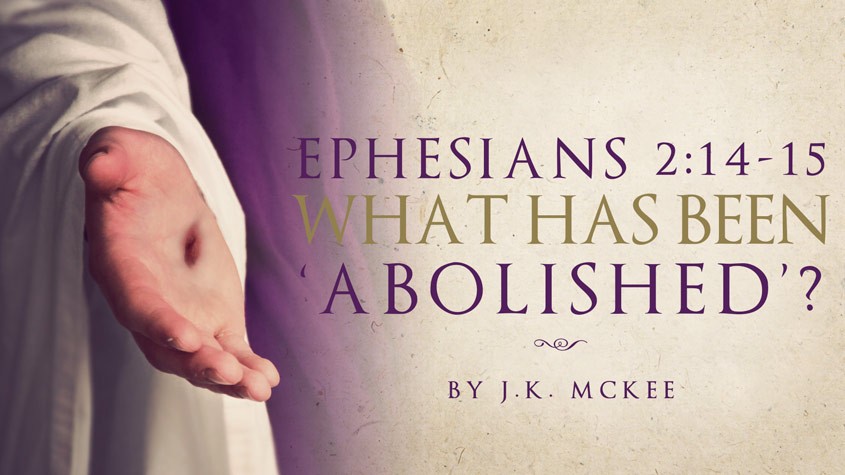

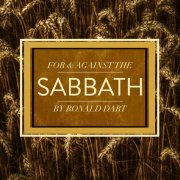

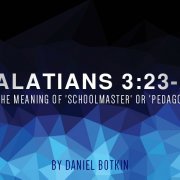
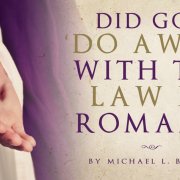
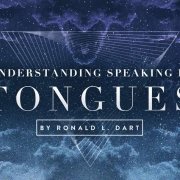
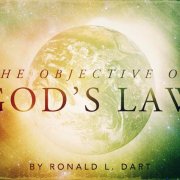

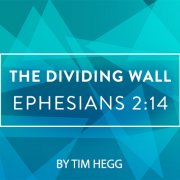
In a properly translated (with no biases) New Testament there is plenty of Scriptural evidence supporting the continued observance of the food and festival laws, for example. Please visit GracePlusLawKeepingSave.Us to gain insight about why some Old Testament laws are still very much in force.
The entirety of the Torah is in authority, as it will always be, because The Almighty does not change. However, since we are in dispersion and there is no Temple or viable Levitical priesthood, some of the Instructions of Torah are not applicable today, just like it was for ‘Judah’ when they were in Babylon.
Please visit https://apaulogetic.com for further study of these topics, as well as, some of Paul’s interpretations regarding the Law of God given through Moses.
May Yah bless your time in His Word!
Rich Wheeler
Acts 21:24
https://apaulogetic.com/
Rich if that is so why have you not killed a Jew for not keeping Sabbath. Hypocrite! you cannot have the Law without the punishment. These even wanted to kill Jesus for healing on the Shabbat. No punitive laws no Law stands.
Yeshua took on the punishment for breaking the law(s). That is why we don’t “kill a Jew for not keeping Sabbath”.